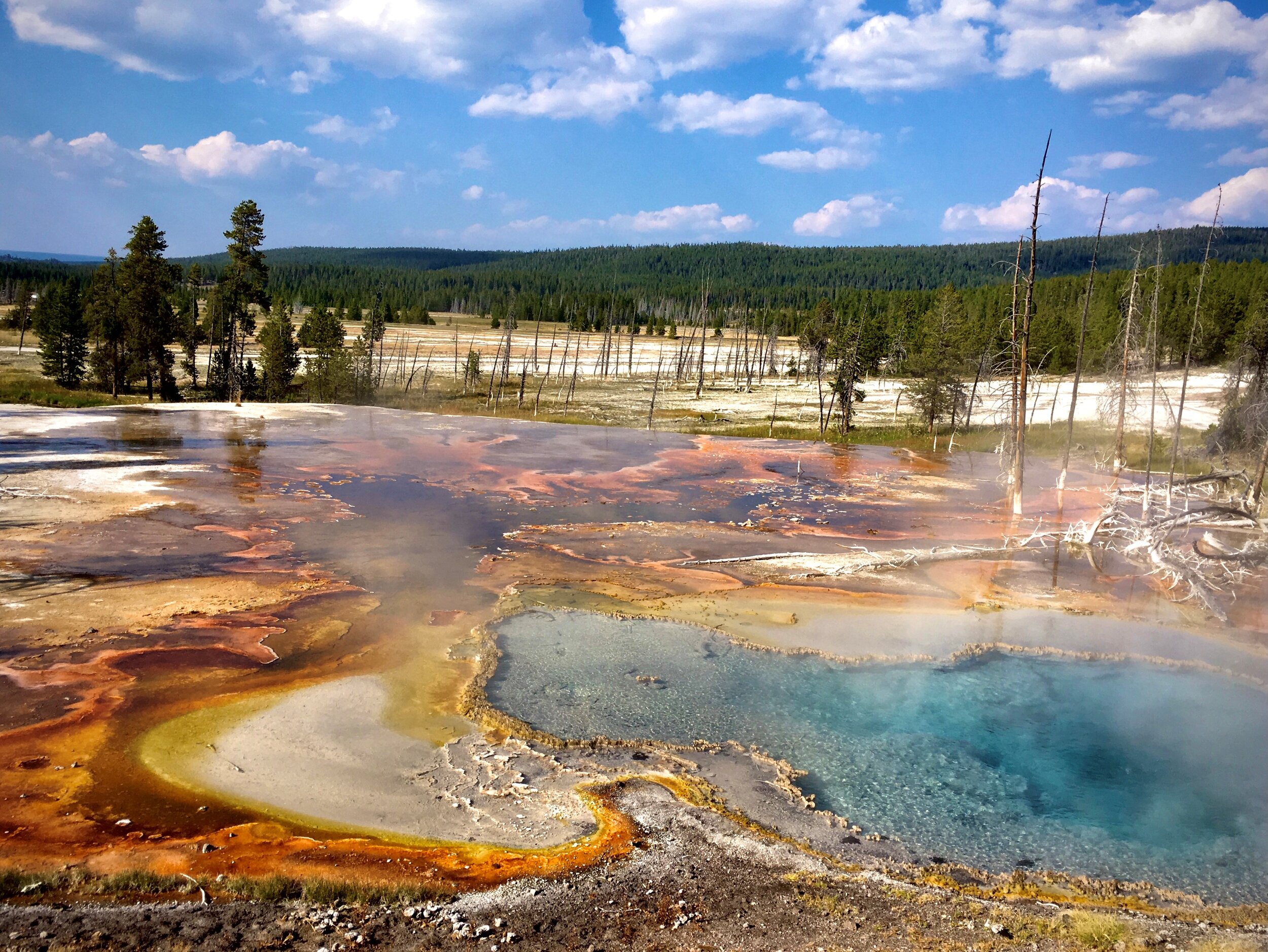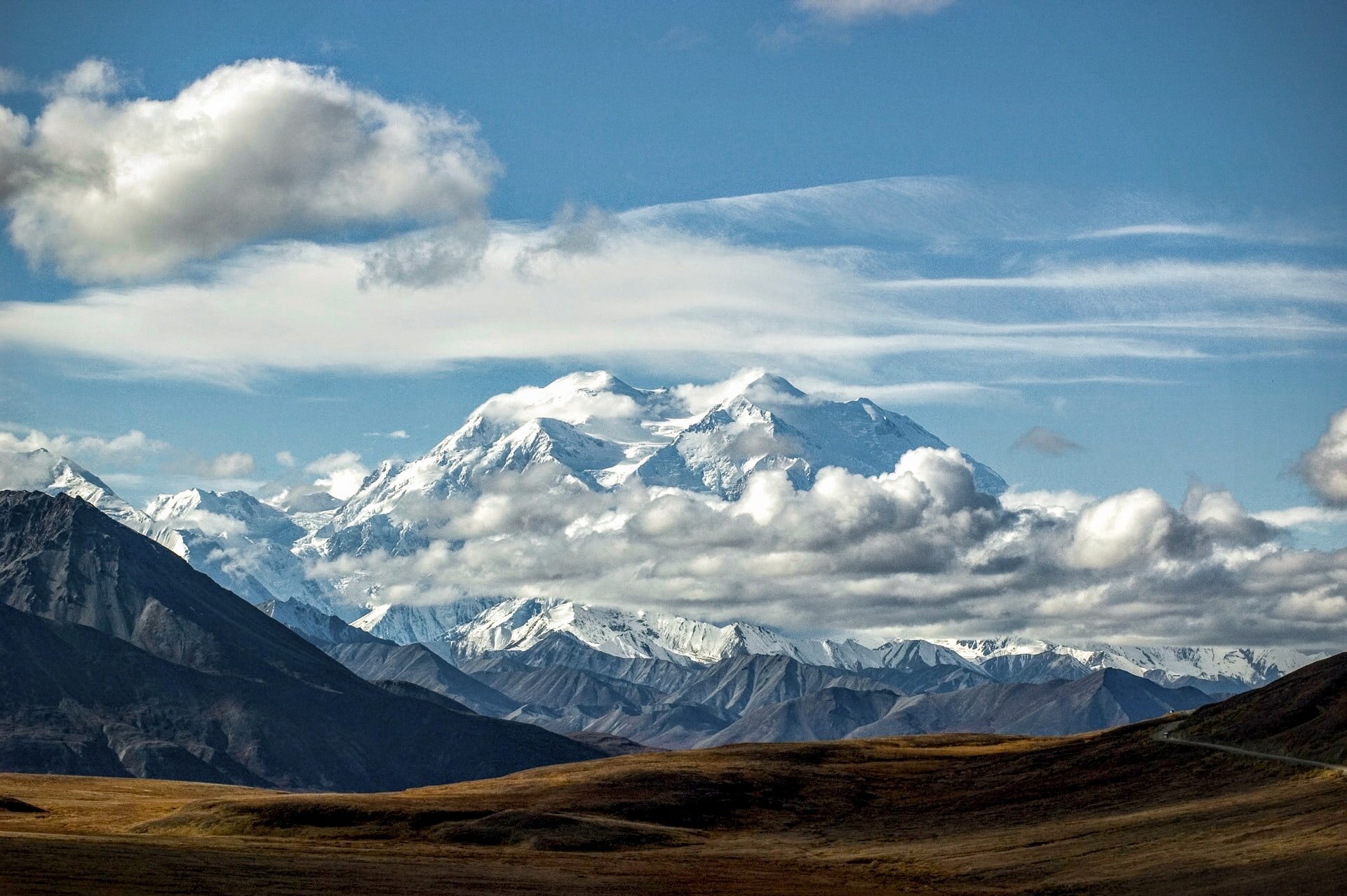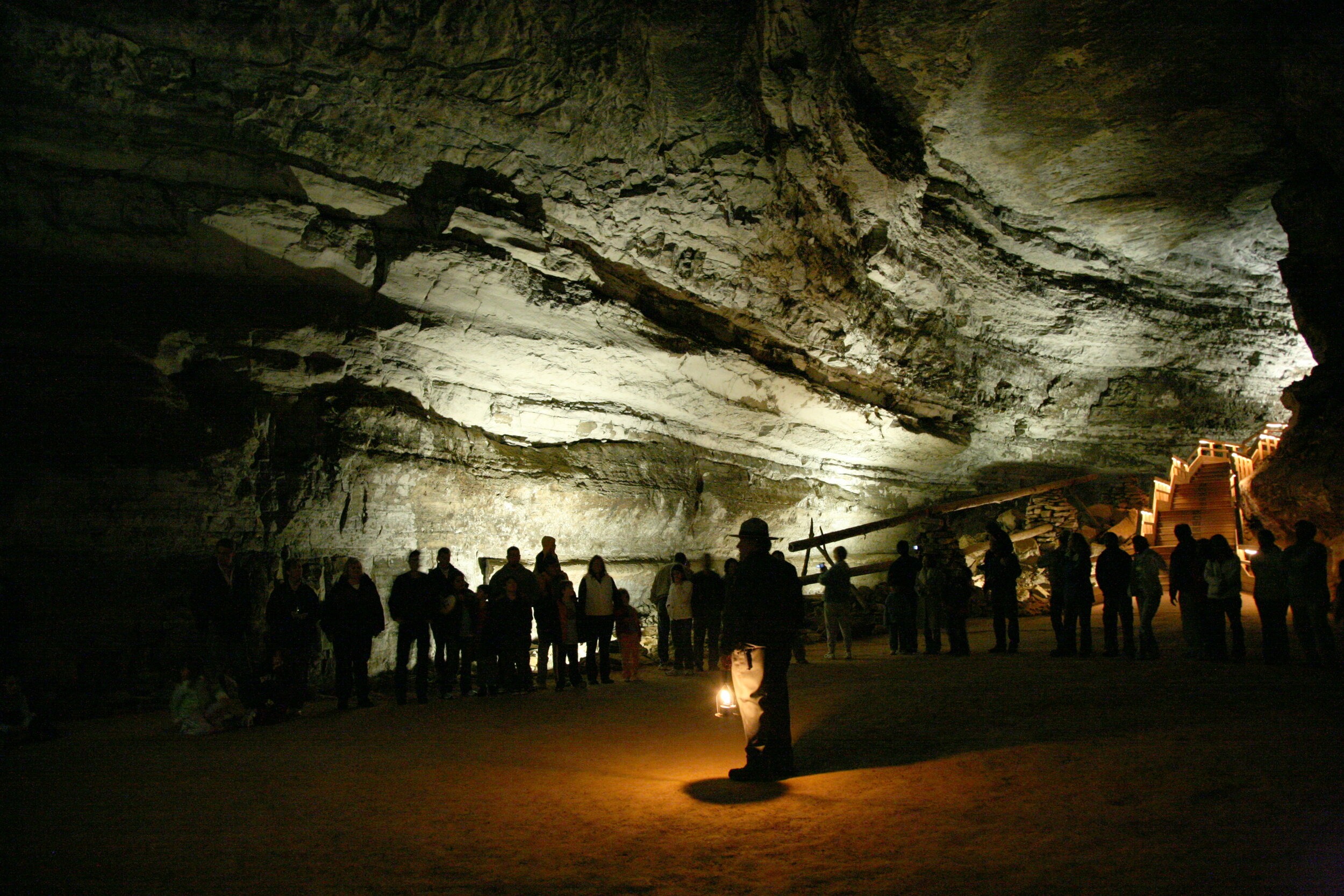Interesting Facts About U.S. National Parks
From the Largest to the Smallest and Everything In Between
The National Park Service manages over 84 million acres of land including 63 national parks which protect and preserve some of our most unique and beautiful natural wildlands including over 18 million miles of trails. Here are some interesting facts about our national parks that might just surprise you.
[Note: This article may contain affiliate links.]
The Oldest National Park
On March 1, 1872, Yellowstone National Park not only became the first U.S. national park but the first in the world. With over 2.2 million acres of land, the park is so large it spans 3 states - Idaho, Montana and Wyoming.
It’s home to the world’s largest collection of geysers and includes some of the most beautiful and unique hydrothermal and geological wonders found anywhere.
The hot springs here are so acidic that you could actually dissolve an entire human body in them, bones and all.
Yet, despite their extreme toxicity, heat loving bacteria called extremophiles thrive in the springs creating the incredible shades of fiery red and turquoise blues that radiate out from their centers.
The Smallest National Park
Hot Springs National Park in Arkansas takes the prize for the tiniest national park covering only 5,500 acres or 7.81 square miles. Despite its small size, it has 47 different hot springs coming out of the Hot Springs Mountains with waters reaching 143°F (62°C). This is hot enough to cause third degree burns after just 6 seconds of exposure. Despite these scorching temperatures, there are still plenty of places to swim for visitors.
The Largest National Park
Photo: Wikipedia
Wrangell-St. Elias National Park & Preserve covering 13.2 million acres of land in the remote stretches of Alaska is the largest of the U.S. national parks, and has been named a UNESCO World Heritage site.
It contains some of the largest volcanoes in North America and is the greatest concentration of glaciers. The Hubbard Glacier located here is 76 miles long, 7 miles wide and 600 feet tall.
An inspiring and informative collection of maps, graphics, photos and stories, the National Geographic Atlas of the National Parks is an inspiring addition to any adventurer's coffee table.
The Most Popular National Park
The Great Smoky Mountains National Park tops the charts as the nation’s most popular national park with well over 12 million visitors in 2020. Even in its first year of existence in 1934, more than a million people visited.
The park straddles the border between North Carolina and Tennessee and includes some of the most beautiful lush forests in the nation as well as streams, waterfalls and rivers. It even includes part of the Appalachian Trail.
The Cherokee called the sacred mountains Shaconage meaning “place of the blue smoke.” The name was fitting for there always appears to be a blue mist looming over the peaks and valleys which is how it got its current name, “Great Smoky Mountains.”
The problem with the park’s popularity is the ever growing strain on the park’s eco-system and environmental toll. Officials are exploring ways to solve the problem which won’t be easy to limit use for this land was to be protected for the enjoyment of all.
The Least Popular National Park
Photo: Unsplash
Located in the remote desolate stretches of Alaska, Gates of the Arctic National Park and Preserve is the least visited U.S. national park with an average of less than 3,000 visitors per year.
It receives fewer visitors in a year than Grand Canyon gets in a single day. No doubt this is due to its isolation and the vast expanses of wild land absent roads and trails. It is here that you can get one of the best views of the aurora borealis as it lights the winter skies in fluorescent shades of emerald greens and purples.
The Only Park South of the Equator
Photo: Wikipedia
National Park of America Samoa in the South Pacific is the only U. S. national park found south of the equator. Samoa means “sacred earth" and it’s easy to see how it derived its name.
The islands’ clear blue turquoise waters are surrounded by steep volcanic mountain slopes blanketed in lush green vegetation. The national park highlights some of the most beautiful protected beaches, coral reefs and temperate rainforests making it a true tropical paradise. It also helps preserve the Polynesian culture and the island way of life.
The Most Dangerous National Park
Grand Canyon National Park is said to be the nation’s most dangerous park due to the number of deaths that have taken place at the park, 134 since 2010.
With sheer cliff drop offs, falls account for many of these deaths, but they are not the biggest cause of death. Most deaths are the result of medical issues which are often exacerbated by extreme heat, and natural deaths.
The Highest Peak
Photo: Patrick Federi, Unsplash
The highest peak found in the U.S. national parks is Denali (formerly Mount McKinley) in Denali National Park & Preserve in Alaska. Reaching a height of 20,310 feet above sea level, it takes an average of 17 to 21 days to climb.
It is the third most prominent and the third most isolated peak on the planet right after Mount Everest and Aconcagua. Obviously, a hike to the summit in arctic conditions is not for the faint of heart and should only be attempted by experienced climbers.
The Lowest Elevation
Badwater Basin located in Death Valley National Park is the lowest point in North America at 282 feet below sea level.
Interestingly, Mount Whitney, the highest point in the contiguous states is less than 9 miles away which is no surprise since Death Valley is known as a park of extremes.
The salt flats here cover 200 square miles and there is a small spring-fed pool in a sink where salts accumulate making the water undrinkable giving the area its name. Despite the salts, several species of animal and plant life thrive in the area. You can even find the rarest fish in the world, the Devils Hole Desert Pupfish, in neighboring Devil’s Hole where water temperatures reach 92°F.
The Hottest National Park
Death Valley National Park is by far the hottest U.S. national park. It is said that the hottest recorded day there was on July 10, 1913, with temperatures reaching 134°F (57°C).
However, there is some debate as to whether or not this recording was an error. The area made headlines again on August 16, 2020, when temperatures reached an astonishing, verified 130°F (54.4°C). Regardless, it is not uncommon for summer temperatures to be between 100-120°F. Additionally, Death Valley is the driest of all the national parks with an average rainfall of less than 2 inches.
The Coldest National Park
Photo: Austin Tiffany, Unsplash
Denali National Park in Alaska is the coldest of the U.S. national parks with average lows dipping into negative digits reaching as low as -75°F (-60°C) with wind chill down to -118°F (-83°C). This is no surprise when you consider the highest peak, Denali, lies within the park’s boundaries. Even the average high in June is only 53.6°F (12°C) with lows getting down to a typical 33.8°F (1°C).
The Longest Cave System
Located in the hills of south-central Kentucky is Mammoth Cave National Park. It is home to the world's longest known contiguous cave system. It is so huge that it has never even been completely explored and may never be.
So far, more than 400 miles of limestone caves have been documented and mapped out with more being added to the list each year. It is estimated that there could be as many as 600 miles of unexplored territory. The park has been named both a UNESCO World Heritage Site and an International Biosphere Reserve.
The Deepest Cave
The deepest cave in all of the national parks is Lechuguilla Cave located in Carlsbad Caverns National Park in New Mexico.
Stalagmites, stalactites and draperies by a pool at Lechuguilla Cave (Photo: Wikipedia).
Since 1984, over 145 miles of passages have pushed the depth of this single cave to 1,604.2 feet (489 meters). It is also one of the four longest caves in the U.S. Access to the cave is limited to research and exploration only, but the other caves that are open to the general public are almost just as impressive. For example, Carlsbad Cavern is over 30 miles with its “Big Room” spanning 8.2 acres and open to tourists.
The Deepest Lake
Photo: Ruth Taylor. Visit her incredible gallery on Instagram @elysian_reflections.
Crater Lake at Crater Lake National Park is the deepest lake in the United States and number 9 in the world. With a depth of over 1,900 feet, it’s so deep that you could fit the entire World Trade Center inverted down into it with room left over. It’s famous for its crystal clear blue water and Wizard Island sticking up out of the water near its western shore, a volcanic cinder cone over 300 acres in size.
No Longer in Existence
Photo courtesy of Wikipedia.
The 2nd U.S. national park after Yellowstone was Mackinac National Park in Michigan. It existed from 1875 to 1895, and is the only national park to have been de-designated.
Mackinac was turned back over to the State of Michigan where it became Mackinac Island State Park.
The Tallest, Single-Drop Waterfall
Nearly two-thirds of the earth is covered in water including thousands of majestic waterfalls. Yosemite National Park in California is home to 25 falls and holds the record for having the largest single-drop waterfall in North America, Ribbon Falls.
Ribbon Falls plummets a spectacular 1,612 feet down in spring, nine times higher than Niagra Falls.
Yosemite is also home to Yosemite Falls which consists of 3 falls with a total drop of 2,425 feet, one of the tallest falls in the country.
A Waterfall on Fire
Photo: Cedric Letsch, Unsplash
Yosemite National Park in California is home to “Fire Fall,” the name given to Horsetail Fall at certain times of year when the sun hits it at just the right angle creating a phenomena where the water appears to be on fire as it cascades down the eastern edge of El Capitan.
Viewing the falls at this time has become so popular that the park has had to put restrictions on the number of visitors each year when it occurs. Fire Fall usually takes place in late February but take note that rain, snow and heavy clouds will block the sun’s rays where the falls will not illuminate.
The Largest Tree by Volume
Sequoia National Park is home to the world’s largest tree by volume, a giant sequoia named General Sherman. Its base circumference is almost 103 feet, its largest branch has a diameter of 7 feet and it’s believed to weigh approximately 1,385 tons.
With a volume over 52,500 cubic feet, you could fill it with water and take a bath every day for 27 years and still not run out of water.
The Most Hoodoos
Bryce Canyon National Park in Utah not only has more hoodoos than any other national park, it has the highest concentration of hoodoos anywhere in the world.
These hoodoos are incredibly rare geological formations created over 60 million years ago. The bases are soft rock while the tops are harder such that erosion creates unique tall, thin spires of rock that protrude in unique ways, some of which are up to 200 feet high.
Bryce is also home to slot canyons, windows, arches and fins. Its characteristic red rock is the result of iron-rich soil.
The Largest Concentration of Natural Arches
Arches National Park in Utah is home to the densest concentration of sandstone arches of all U.S. national parks. In fact, with over 2,000 documented arches, it is the highest concentration anywhere in the world.
You can also find the largest arch in North America here, Landscape Arch. At 306 feet wide, Landscape Arch is so big that you could fit an entire football field inside it.
The Best Rock Climbing
With over 8,000 climbing routes, Joshua Tree National Park in California offers some of the best rock climbing of any national park in the nation.
The park is famous for its traditional-style crack, slab, and steep face climbing. In addition to so many routes, there are thousands of boulders and natural gaps to explore. It proudly touts itself as a world-class rock climbing destination.
The Clearest Skies
Unsplash
Big Bend National Park in the far west of Texas has the clearest skies of any U.S. national park. Designated an International Dark Sky Park in 2012, efforts were taken to limit and mitigate all excess lighting in the park. This coupled with the fact it’s located far from surrounding cities results in minimal light pollution and a perfect spot for stargazing. The park offers numerous night sky programs including star parties, ranger led moonlight walks and educational programs.
When visiting, be sure to bring a pair of binoculars and a comfy lawn chair. This is the perfect park for meteor showers, night photography and incredible views of the Milky Way.
The Only Underwater Geological Trail
Biscayne National Park in Florida is home to the Maritime Heritage Trail, the only underwater geological trail of any national park.
The trail can be explored on your own or by ranger-led snorkeling tours which take you to six different shipwrecks along the way, many of which are believed to have been caused by reefs. The trail is only accessible by boat and sites are marked by mooring buoys that protect the fragile coral reef ecosystem from anchors, ropes and chains. Most sites in the park can be reached by snorkeling although a few require scuba diving.
The park itself is 95% water and is composed of 33 small islands formed from fossilized coral reefs and nearly 250 square miles of sea. It is said there may be hundreds of shipwrecks hidden beneath its waters and rumors of buried treasure have been circulating for centuries.
Read More…
National Park Articles:
Top 5 National Parks in the Western US featured on We Are Travel Girls
An Interview With a Former SCA Employee - A student’s recollection of what it was like working at Arches National Park


























